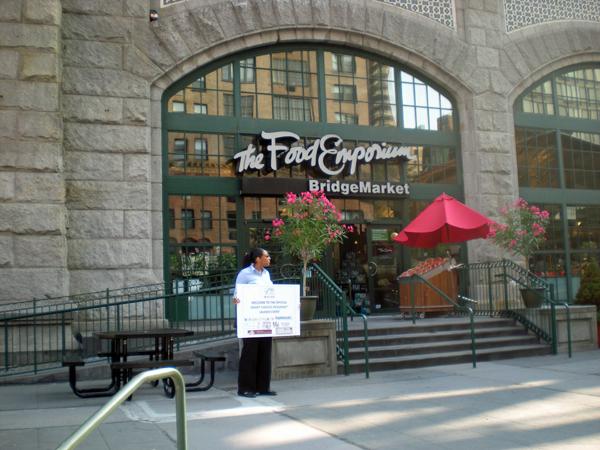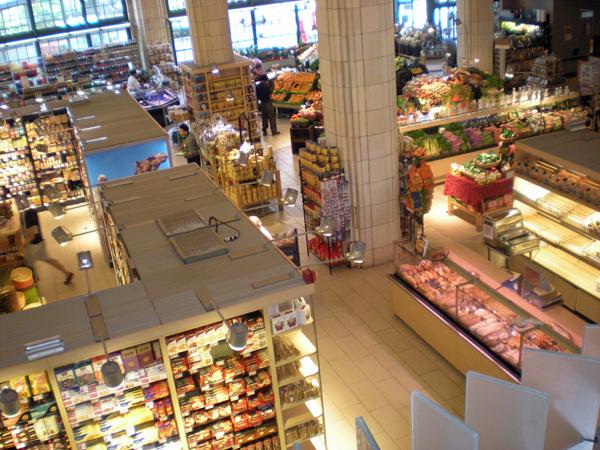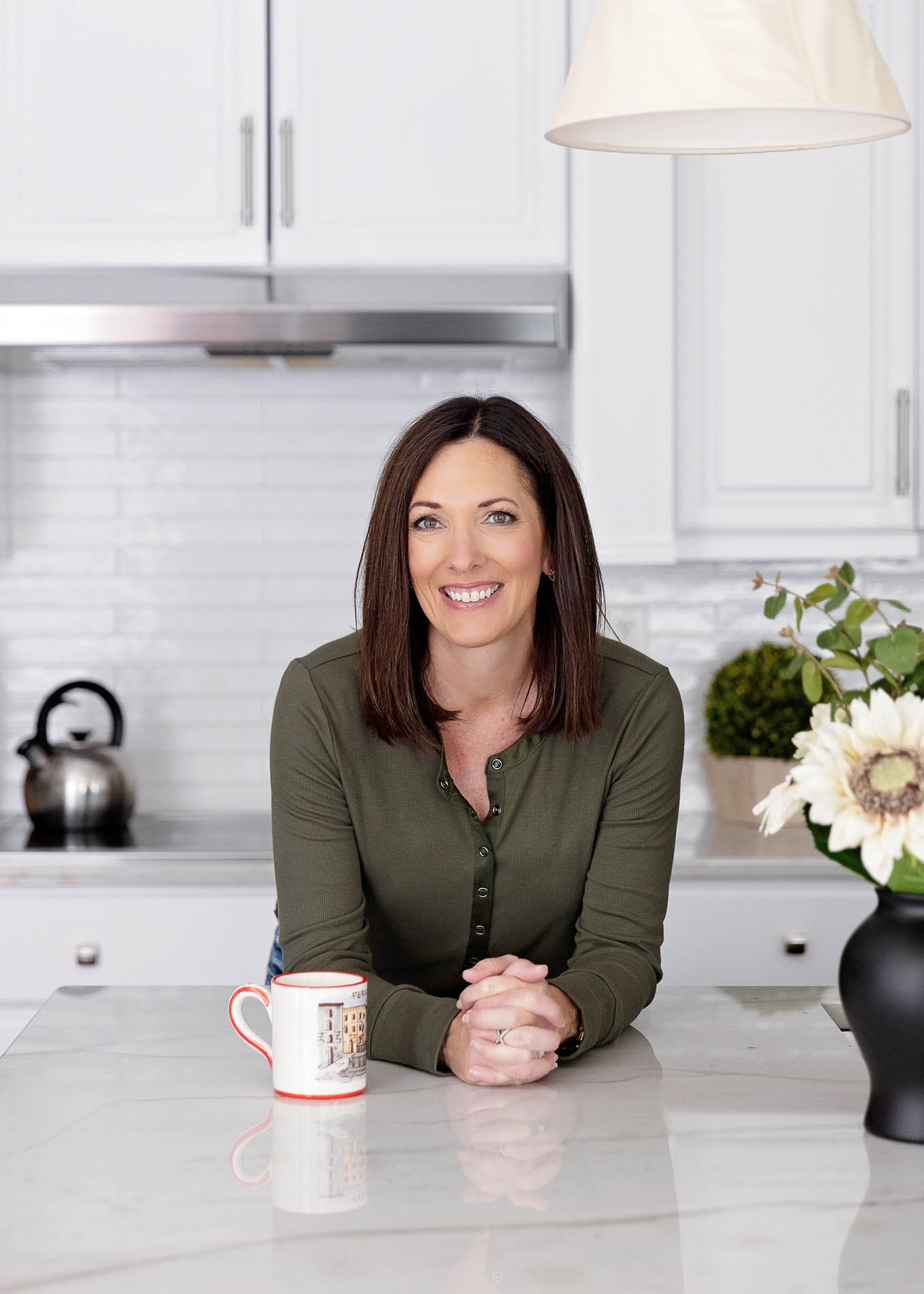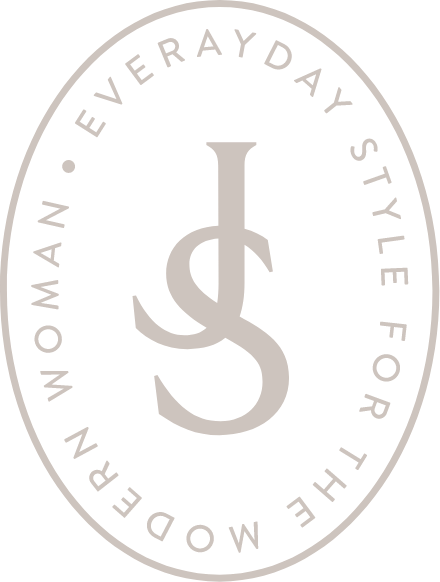**UPDATED September 5, 2009**
I’ve been taking my time writing this post, trying to assimilate my thoughts so that I can be fair and also honest. First of all, I appreciate so much being included in this event with such a small group of seasoned bloggers. Why does re-reading that last sentence make me think of steak? Anyway, here’s a picture of a few of us hanging out in Times Square.
I have to admit, I was a bit star struck when I found myself sitting next to Busy Mom the first night at dinner. Hers is one of the first blogs that I read when I started blogging back in the stone ages. Of course, she is utterly delightful and down to earth and is probably going to hate me for making a big deal about meeting her.
And then there’s Dawn with her very own book. (That’s my ultimate bloggy dream, by the way. I’d love to compile my best posts into a book. Of course only my mother would buy it, but seeing my name on the cover would be thrill enough.)
Carmen and I both hosted local Hebrew National Picnics with a Purpose last summer (hers was in VA Beach, and mine was here in Philly of course) so it was fun to actually meet her.
Also attending but not pictured were Asha from Parent Hacks, who is just darling, and Daniel from Consumer Queen (and King), who shares my passion for Starbucks.
And I got to see Meaghan, who was there representing Mom Central. I met her at the circus last spring, and I’m looking forward to working with her again soon, hopefully with Disney On Ice this winter. WOOT!
The folks at Weber Shandwick thought of everything and went all out to make our stay as comfortable and carefree as possible, right down to sending us AmEx gift cards before the trip to cover babysitting and incidental travel costs and providing us with Internet access in our hotel rooms. It’s the little things, you know?
We stayed at Le Parker Meridian. I just love their slogan — Uptown. Not Uptight. It was a VERY cool place to stay, and breakfast at their Norma’s restaurant was divine. In fact, it was so lovely that I had to take a picture.
After breakfast, we went to a Food Emporium where the lovely Wendy Bazilian, DrPH, RD, nutrition expert and author of (warning: affiliate link) The SuperfoodRx Diet introduced us to the Smart Choices Program. I honestly don’t think I’ve ever been in a more beautiful grocery store. In fact, I don’t think I’ve ever USED the word beautiful to describe a grocery store before.
Wendy gave us a guided tour and explained the program in full as we followed along behind her armed with Flip Cameras and notebooks. Of course I had neither because I’m NEVER prepared for anything. Guess I should have been a Boy Scout.
So, getting down to bidness. The Smart Choices program is basically a uniform labeling system that is intended to help consumers navigate the minefield that I think we can all agree is the modern day supermarket. Basically, their seal serves to pinpoint some of the healthier food choices on the grocery store shelves. The program was created by a “coalition of scientists, academicians, health and consumer organizations, food and beverage manufacturers, and retailers.” Approved products are labeled with the green check mark and also include a calorie and serving count on the front of the box to encourage correct portion sizing.
Nutritional criteria are based on the Dietary Guidelines for Americans, reports by the Institute of Medicine, and others. In their efforts to maintain transparency and credibility, the current nutrition criteria is available to the public. This criteria is flexible and will change as scientific research changes and new dietary guidelines are released. It is a not-for-profit organization, but companies do have to apply for approval and then pay to have the label applied to their products. These funds all go back into the management of the program. (The cost varies depending on the size of the company in an effort to keep it accessible for all.)
WHEW! Got all that?
Them’s the facts. Wanna know what I think? Well I’m gonna tell you anyway.
First of all, I want to say that I highly respect nutrition scientists and the work that they do. I even got to meet a few; in fact, I bombarded them with questions the whole weekend, and they were wonderful about trying to answer my questions and help me sort through everything I’m reading and learning. And I know that we are all after the same thing here, namely a healthier America.
We do have a public health crisis. We are the most overfed, undernourished country in the world. Think about it. That’s pretty hard to achieve. Unfortunately, we get bombarded by so many conflicting messages about food and nutrition, and most people don’t have the time or inclination to try to filter through them on their own. So I believe that this type of program could be worthwhile.
Here’s what I like about it.
I like that they set a limit for nutrients to limit and a minimum nutrients to encourage. In other words, you can’t “make up” for bad ingredients by including good ones. They still have to keep the amount of bad ingredients to a certain level to qualify.
I appreciate that this is a non-profit organization, and that the goal is to have the health of America at the forefront, not big business.
I also like how they are trying to encourage correct portion sizes by including a calorie count and amount of portions in the package right on the front.
That said, I have some reservations. I’m sure you’re not surprised.
First of all, some of the products that “made the cut” surprised me. Many of the cereals and snack foods contain high fructose corn syrup. I realize that they are still better choices than 75% of the crap we could be buying, and yet, we can do so much better. I would love to see a distinction between added sugar and high fructose corn syrup in the nutritional criteria. (That doesn’t appear to be there now, but I could be wrong.)
Through the program, foods are divided into 19 groups, and there are different nutritional qualifications for each group. This makes sense, as you can’t exactly compare apples to Teddy Grahams. But on the other hand, perhaps we should be doing exactly that. I would prefer to see a program that would encourage people to bypass the snack aisle entirely in favor of the produce and dairy aisles. And I while we’re at it, I would love to see the dairy aisles ridded of junk masquerading as food. But that’s a post for another time.
Another concern I have is that smaller companies (and most companies specializing in more wholesome food are small) won’t be able to afford to pay to apply to the program and to revamp all of their packaging to include the Smart Choices seal and as a result, the food giants who already dominate the industry will once again get a leg up on the competition. In fact, I’d prefer to see a program that doesn’t require an application process at all. I would rather see a program that seeks out the best choices on their own, rather than waiting for companies to apply, and even provides a way to help offset the cost of redoing the packaging. Of course, this takes money. And who would pay for that? So I suppose that’s why this program is set up the way it is.
In addition to that, I feel that fresh produce once again gets the short end of the stick. All produce automatically qualifies, but there is no package on which to affix the green check mark. I realize people KNOW that produce is good for us, but there is very little advertising (because profit margins are small) and nothing really pointing us away from processed foods and towards the good stuff. And maybe that isn’t the point of this program, but I’m just thinking out loud about ways we can encourage people to eat more fresh foods.
When I questioned some of the criteria, particularly the issue of high fructose corn syrup, Wendy explained that the nutrition criteria are flexible and adaptable, and as research makes new discoveries, the standards will adapt. She also explained that there is a standard for “nutrients to limit” (such as saturated fat, trans fat, cholesterol, added sugars and sodium) and “nutrients or food groups to encourage” (such as whole grains, produce, calcium, fiber, vitamins A, C, and E, etc.) In other words, a food can’t “make up for” the bad ingredients by including good ones. That, at least, is good, but I would like to see stricter guidelines for nutrients to limit.
She also pointed out, and this I understand, that the goal here is to improve overall public health, and they are trying to meet people where they are and encourage them to take baby steps to smarter food choices. I realize that not everyone in America analyzes their food as I do (heck, I realize that 99% of America doesn’t analyze food choices as I do) and the products that earn the Smart Choices seal may very well be a huge improvement over the products sitting on the shelves in 75% of American households. Perhaps this labeling system will help people make smarter choices than they are currently making, but I can’t help but fear that a label such as this will only serve to give people license to eat junk and feel like they are eating health food.
Finally, portion size and eating habits are HUGE issues in our culture, and more and more I’m convinced that it is the leading contributing factor to our health and weight control issues. The program does try to address this by providing a calorie count and serving size guideline along with their seal of approval, but I’m not sure that’s enough. I fear that the green check mark will give people license to eat even more of it. We tend to do that — if some is good for us, then more is better, right? I mean, do you remember when Snackwells came out in the early 90s? I was in college, and we thought we’d died and gone to heaven. We could eat as many cookies as we wanted because they were fat-free, of course! Oy.
All this to say, if you are currently one to read the backs of nutrition labels, keep reading them. Keep researching. Decide for yourself what is nutritious for your family; don’t let the green check mark speak for itself. Let the green check be a place to start, a way to pinpoint foods that might be worth looking at, but then take a look at the ingredients and make an informed decision.
And remember that the criteria for the Smart Choices Program is based on the low-fat guidelines that are still very much at the heart of mainstream medical and nutritional advice. I believe that in time, the standards will adapt to reflect new research that is proving that it’s the industrial fats and sugars that are the cause of the obesity and health issues that plague Americans and not dairy fat and red meat. But we have a ways to go yet.
**UPDATE**
My husband forwarded me this article today from the New York Times — For Your Health, Fruit Loops. Now I know where those last two commenters came from! 😉 I felt like I was fair and balanced in this post, and I tried to keep the average consumer in mind, not the overly health-conscious such as myself, when I suggested that this program may be helpful to some. But upon reading this article and seeing Fruit Loops and Fudgsicles bearing the Smart Choices seal, I have to say that my reservations about the program have been fully realized.
I truly enjoyed meeting the proponents of the program, but I’m sorry to say, I don’t see it as a step in the right direction.













16 Responses
Excellent summary!
There is a similar program that Acme has been using. I don’t think it’s the same one. And, WOW, that is a gorgeous store!
Whew. Good job. I know that I always feel totally inadequate when trying to do a summary post after an info-packed event, and so I often end up feeling too overwhelmed to do it any justice at all.
Hubby and I are staying at Le Parker Meridian next month when we do an overnight in NYC to celebrate his bday.
here here! great synopsis – and kudos on sticking to your principles!
I know that it’s important to shop healthy, but I really, really want the bacon, eggs, and potatoes from the first picture…
Only when the public perceives food choices as being *just* as important as the pills they need or will need will anything change. With the exception of fructose syrup, most people know what they need to be doing.
I think you did a great and fair review. What were the prices on the foods in this store?
Susan, it was pricey! But then, it’s NYC. 🙂
And yeah, people really don’t value their food choices. As a result, we’re paying for it with health care costs. Sigh…
Whew! I see why you took awhile to post!
I actually noticed the green check on my favorite brand of spaghetti sauce recently – yay!
And I’m with you on educating people to read labels and realize the truth of the packaged foods. Yes, I still buy my share of them, but I am slowly trying to make over the way we eat. I did think of you this morning when I was grocery shopping and I went back to the produce department to pick up more fresh veggies before I checked out.
You mentioned about this program meeting people where they are and trying to educate. That reminds me of the sad fact that food assistance programs (even reduced and free school lunches) always push the packaged convenience foods that are horrible for one’s health. Yet folks on these programs need to know that there are better choices out there too. That’s one of my pet peeves about the food industry!
Great post, thanks!
Wow – very good synopsis of this program and that grocery store IS amazing. I would have to get dressed up to shop there.
I actually think this is an excellent program for the general public. I think most people fall into the category of needing to feed a family quickly and cost effectively. And I fear that most people do not understand how to do that. So, I love that this program gets people looking at the labels in the first place and gives them a way to navigate through all the products out there. While I wish everyone would read the labels most people probably don’t have time, energy or even understand them once they do.
I totally agree with needing to make produce more of a priority and seeking companies rather than them going through the Green Check application process. It reminds me of the way most things are done – if you have the money, you can promote the heck out of your product, cause, etc.
I think your final point about this being a good place to start is great because 99% of people most likely don’t even know where to begin.
Liked your assessment of the program. Very diplomatic but you told it like it is! Good for you! : )
You look completely amazing!
Nell
Ugggh. The list of “SmartChoices” includes some of the most refined, overprocessed foods on the planet. We’ve all watched soem of the most polluting companies in existence engage in “greenwashing” for years, creating corporate-funded, “consumer-friendly” fronts that allow them to establish their “environmentalist” credentials; now that people are FINALLY developing a new consciousness about food, we’re seeing the same damn thing occur on that front.
Look at the list of foods that “merit” the label. I’m hardly a radical eater–I like my occasional bit of meat, enjoy a good chocolate shake–but there’s not ONE item on that list I’d allow into my home.
This flies directly in the face of all the great work that’s being done by scientists, ecologists, farmers, advocates of sustainable agriculture, in-school nutrionists. The head of Harvard’s Nutritioon school has called in, in so many words, a “disgrace.” That you took a tour with a slick marketer and then trumpeted the “virtues” of this program is extremely disappointing.
Let’s be honest here – the point of the “Smart Choices” program is to short-circuit any actual health investigation by consumers and replace it with an easy “green means go!” decision. Look at one of the comments above for a perfect example:
“I actually noticed the green check on my favorite brand of spaghetti sauce recently – yay!”
Then there is the “better than a poke in the eye with a sharp stick” defense – that these products are Healthi”ER” choices than other products the consumer “COULD” select.
To quote Eileen T. Kennedy, president of the Smart Choices board and the dean of the Friedman School of Nutrition Science and Policy at Tufts University, in a NYT article yesterday:
“You’re rushing around, you’re trying to think about healthy eating for your kids and you have a choice between a doughnut and a cereal,” Dr. Kennedy said, evoking a hypothetical parent in the supermarket. “So Froot Loops is a better choice.”
A doughnut or Froot Loops?! Do these two choices really define the options for the parent “trying to think about healthy eating for your kids?” Are they doing all their grocery shopping at the gas station mini-mart? Why not a cube of butter, or maybe a shot of vodka? I’m sure these options contain more nutritional value than the hypothetical doughnut as well!
If Dr. Kennedy actually knows any such parents she should be calling child protective services, not designing a green box for them, because no doubt these parents left their kids in the car parked in the sun while in the grocery store trying to chose between doughnuts and fruit loops. Don’t forget to stop at the pharmacy for your kid’s insulin shots, mom!
In all seriousness, I am in the PR business myself, and I was dismayed to see that Webber Shandwick played a part in this. Corporate America already has a trust problem, and this type of deceptive campaign will only make matters worse for everyone.
And really, who media-trained Dr. Kennedy?
I posted some additional thoughts on this program on my blog here: https://www.danielpbingham.com/?p=73
I have so much respect for you and don’t comment often but I want to say that even before I read your addition at the end I felt that you did a really great job of a fair and balanced analysis based on the information you had. …. the current media attention has many people researching and reading about smart choices program (including myself ;))